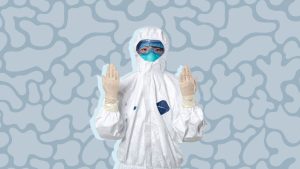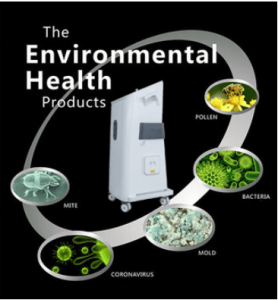Hospitals have specific minimum disinfection requirements for both the environment and the equipment used. These requirements are designed to minimize the risk of contamination and provide a safe healthcare setting.
The Importance of Disinfection in Hospitals
Hospitals are high-risk environments due to the presence of pathogens and vulnerable individuals. Effective disinfection plays a vital role in reducing the transmission of infectious diseases within the healthcare facility. By implementing rigorous disinfection practices, hospitals can create a safer environment and protect patients from healthcare-associated infections.
Disinfection Requirements for the Environment
Regular Cleaning and Sanitization
The hospital environment, including patient rooms, hallways, waiting areas, and restrooms, must undergo regular cleaning and sanitization. Surfaces that are frequently touched, such as doorknobs, handrails, and elevator buttons, should be given special attention. Hospital-grade disinfectants approved by relevant regulatory bodies should be used during the cleaning process to ensure effectiveness against a broad spectrum of pathogens.

Terminal cleaning
Terminal cleaning refers to a thorough cleaning and disinfection process conducted when a patient is discharged or transferred from a room. This process involves cleaning all surfaces, furniture, equipment, and fixtures in the room to eliminate any potential pathogens. Terminal cleaning is essential to prevent the transmission of infections to subsequent patients occupying the same space.
Ventilation System Maintenance
Proper maintenance of the hospital's ventilation system is crucial for ensuring a clean and healthy environment. Regular inspection and cleaning of air filters, ducts, and vents help remove contaminants and prevent the circulation of airborne pathogens. Hospitals should also adhere to ventilation standards and guidelines to maintain air quality and reduce the risk of infection transmission.
Disinfection Requirements for Equipment
Equipment Cleaning and Disinfection Protocols
Medical equipment used in hospitals must undergo thorough cleaning and disinfection between patient uses. Each piece of equipment may have specific protocols recommended by the manufacturer or regulatory agencies. These protocols outline the appropriate cleaning agents, disinfection methods, and frequency of cleaning for each equipment type. Hospital staff should receive proper training on equipment cleaning procedures to ensure compliance with these protocols.
High-Level Disinfection and Sterilization
Certain medical equipment, such as surgical instruments, endoscopes, and reusable respiratory devices, require high-level disinfection or sterilization. High-level disinfection involves using agents or processes that kill or inactivate most microorganisms, while sterilization eliminates all forms of microbial life. Hospitals must have dedicated areas or departments equipped with appropriate facilities to perform high-level disinfection and sterilization processes, following strict guidelines and standards.

Equipment Maintenance and Inspection
Regular maintenance and inspection of medical equipment are essential to ensure their proper functioning and prevent the risk of contamination. Hospitals should establish maintenance schedules and procedures to assess equipment performance, identify any malfunctions or defects, and address them promptly. Regular equipment inspections help maintain the highest standards of disinfection and safety.
The hospital's minimum disinfection requirements for the environment and equipment play a critical role in maintaining a safe and infection-free healthcare setting. By adhering to these requirements, hospitals can minimize the risk of transmission of pathogens and protect the well-being of patients, staff, and visitors. Regular cleaning, terminal cleaning, ventilation system maintenance, proper equipment cleaning and disinfection protocols, high-level disinfection and sterilization, and equipment maintenance and inspection are essential components of a comprehensive disinfection strategy in hospitals.
Implementing and strictly following these minimum disinfection requirements ensures a clean and safe environment, reducing the occurrence of healthcare-associated infections and enhancing patient outcomes. By prioritizing disinfection practices, hospitals can provide a reassuring and secure healthcare environment for all stakeholders.
Note: The specific disinfection requirements may varyacross hospitals and countries. It is crucial for healthcare facilities to adhere to their respective local regulations, guidelines, and best practices.